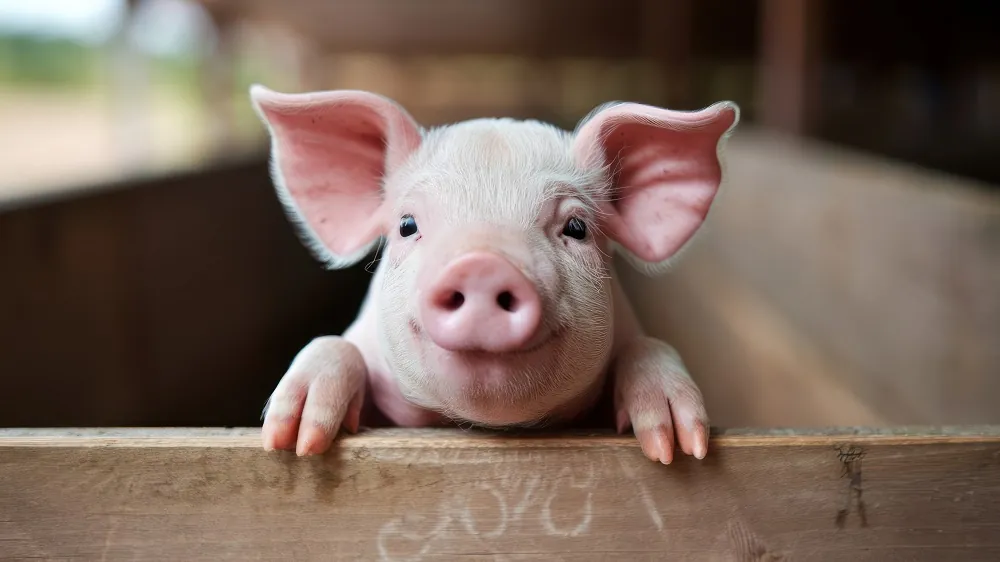On April 4, 2025, Chinese scientists announced a groundbreaking achievement in the realm of medicine: the world’s first pig-to-human liver transplant into a brain-dead patient. This innovative transplantation marks a significant advancement toward the potential routine use of pig organs to save human lives [1].
The Shortage of Organs for Transplantation
The persistent shortage of organs for transplantation has become a critical issue, contributing significantly to mortality rates in patients with organ failure. Currently, transplantation is performed only when the original organ has irretrievably failed. This necessity raises fundamental questions about proactive approaches to maintaining bodily health and longevity.
In the future, there is potential for preemptive "service" to human organs to prolong life and health spans. However, the initial challenge remains—the supply of viable organs. While lab-grown organs represent an exciting theoretical solution, a more practical, albeit ethically contentious, approach involves the harvesting of organs from genetically modified pigs, whose physiological and anatomical similarities to humans make them suitable candidates for xenotransplantation.
Genetic Engineering and Xenotransplantation
Previous attempts at xenotransplantation faced significant hurdles primarily due to graft rejection. The complex compatibility required for organ transplants means that finding a suitable donor—even among humans—can be difficult. Advances in genetic engineering have paved the way for the development of pigs genetically modified to minimize the risk of acute rejection. Scientists have succeeded in creating pigs lacking specific genes that contribute to rejection and have even introduced human genes to further enhance compatibility.
While pig hearts and kidneys have been transplanted successfully in past experiments, none had reported a pig-to-human liver transplantation until now.
A “Bridge Transplantation” Approach
A recent publication in Nature described an experiment conducted by researchers from the Fourth Military Medical University in Xi’an, China. They executed a heterotopic auxiliary liver transplantation using a liver from a genetically modified Bama miniature pig. This technique involves implanting an organ in a different area from the native organ, in this case, the patient's existing liver. The researchers specifically knocked out critical genes—GGTA1, CMAH, and B4GALNT2—that mediate hyperacute rejection and inserted human genes coding for thrombomodulin, CD46, and CD55.
Initially considered a "bridge transplantation," this method serves a temporary purpose for patients whose livers are non-functional, waiting for a human donor. Nevertheless, this proof of concept sets the stage for potential future full-scale liver transplantations.
Findings and Outcomes
Post-surgery, the pig's liver successfully produced bile and porcine albumin, indicating a return to normal functionality. The liver demonstrated stable enzyme levels, with only a transient spike in AST levels immediately following surgery, which could be attributed to tissue reactions unrelated to the liver.
According to study co-author Lin Wang, the transplanted liver functioned optimally, maintaining normal blood flow and evading major coagulation complications encountered in previous studies, including human cardiac xenotransplantations. The immunosuppression protocol adopted for this experiment primarily worked as intended, although unexpected B-cell activation was noted, which resolved following administration of the immunosuppressant rituximab.
The liver's function remained stable for around ten days, a limitation dictated by the patient's family constraints.
Additional Research and Future Implications
The research team at Xi’an is also notable for having conducted one of the first successful pig kidney transplantations. Leading experts in the field, such as Peter Friend, Professor of Transplantation at the University of Oxford, recognized this study as a pivotal advancement for xenotransplantation, shifting the focus from non-human primate studies to human applications. This transition enables rigorous evaluation of transgenic xenografts within human immunological and physiological contexts.
Despite the sophistication of the surgical techniques employed, caution is warranted, as pointed out by Professor Iván Fernández Vega from the University of Oviedo. He commended the study's scientific rigor and comprehensive characterization while highlighting the need for prudent interpretation of its implications, especially given the presence of the brain-dead donor's native liver, which complicates true evaluation of the pig liver's functionality under independent failing conditions.
Implications for Future Treatment Options
As researchers advance in xenotransplantation, it opens avenues not just for addressing the shortage of human organ donors but also potentially for transformative approaches in treating organ failures.
- Ongoing Research: The Xi’an team has continued to research genetic modifications that could enhance organ compatibility further.
- Impact on Longevity: Successful xenotransplantations might offer innovative solutions for age-related organ decline, potentially increasing healthy life spans.
- Ethical Considerations: The process raises moral questions related to animal rights and the implications of modifying organisms for human benefit.
“This achievement underscores the potential of xenotransplantation to address some of the critical shortages we face in organ donation, but it brings us back to the ethical implications.” – Professor Peter Friend
Conclusion
This pioneering pig-to-human liver transplant is a brilliant example of how genetic engineering and biomedical advancement can potentially reshape medical paradigms, particularly concerning organ transplantation and longevity. The findings from this study could herald a new era in medicine, where cross-species organ donations might become commonplace, provided ethical concerns are addressed, and further research confirms long-term safety and functionality.
Literature Cited
[1] Tao, K. S., Yang, Z. X., Zhang, X., Zhang, H. T., Yue, S. Q., Yang, Y. L., … & Dou, K. F. (2025). Gene-modified pig-to-human liver xenotransplantation. Nature, 1-8.













Discussion